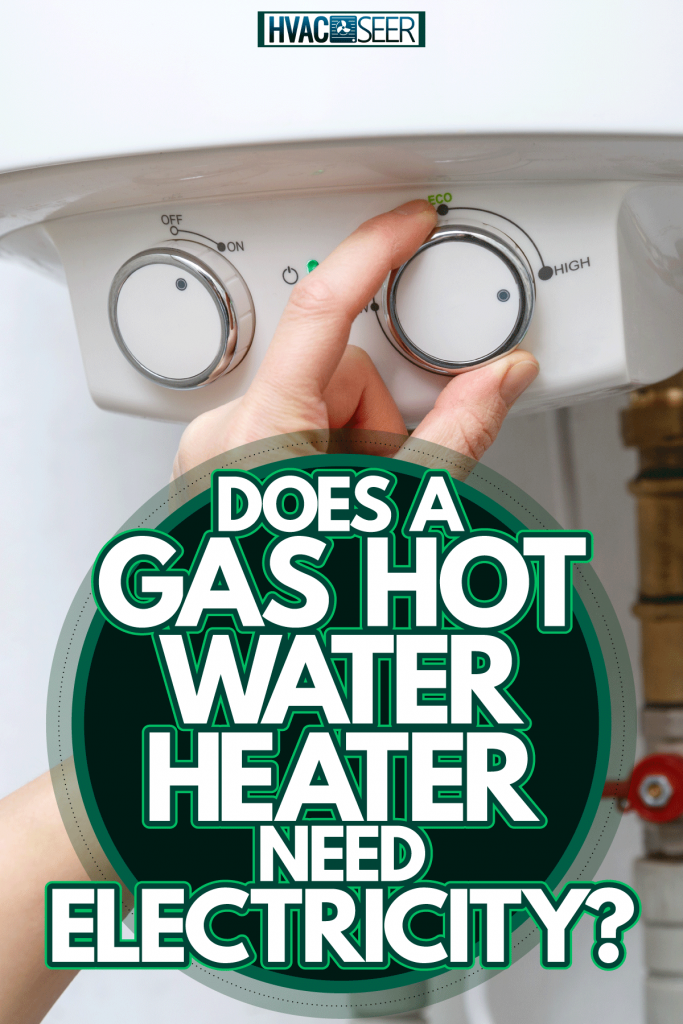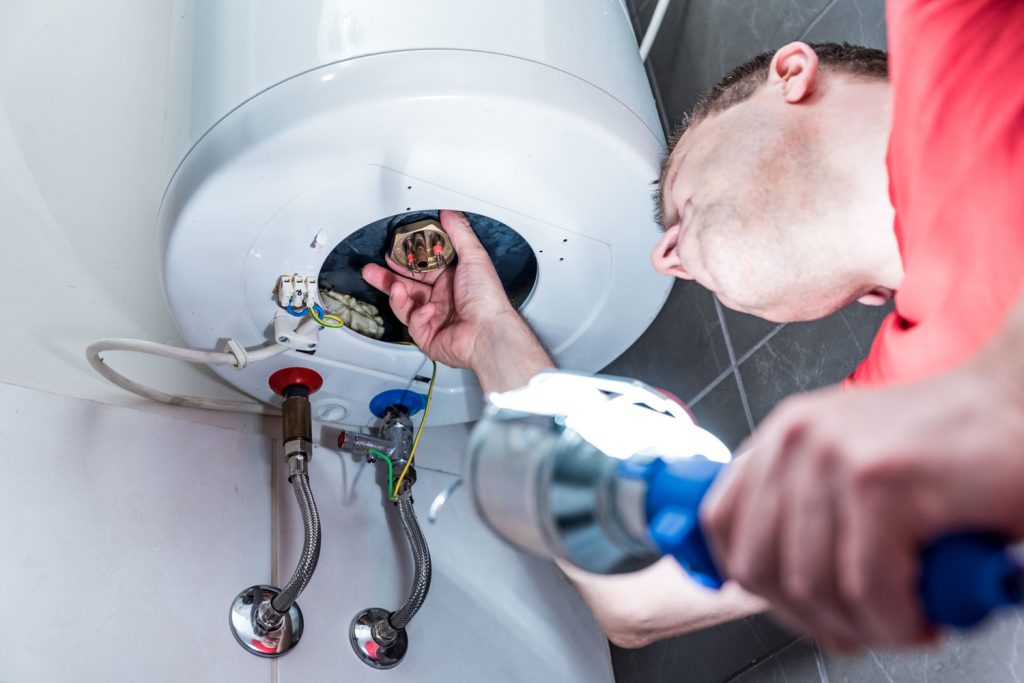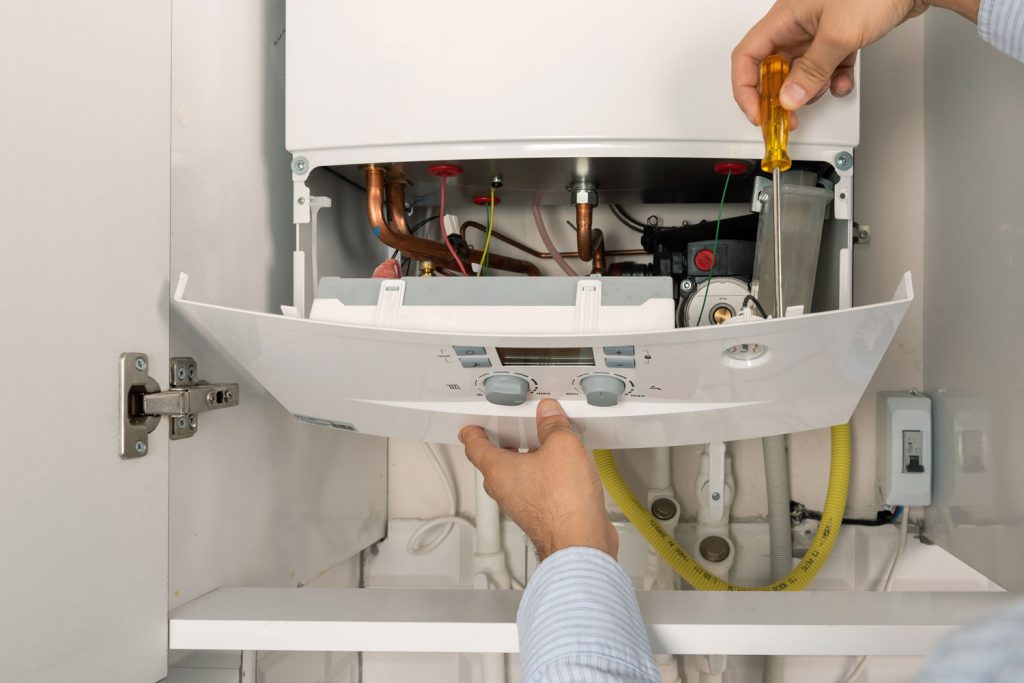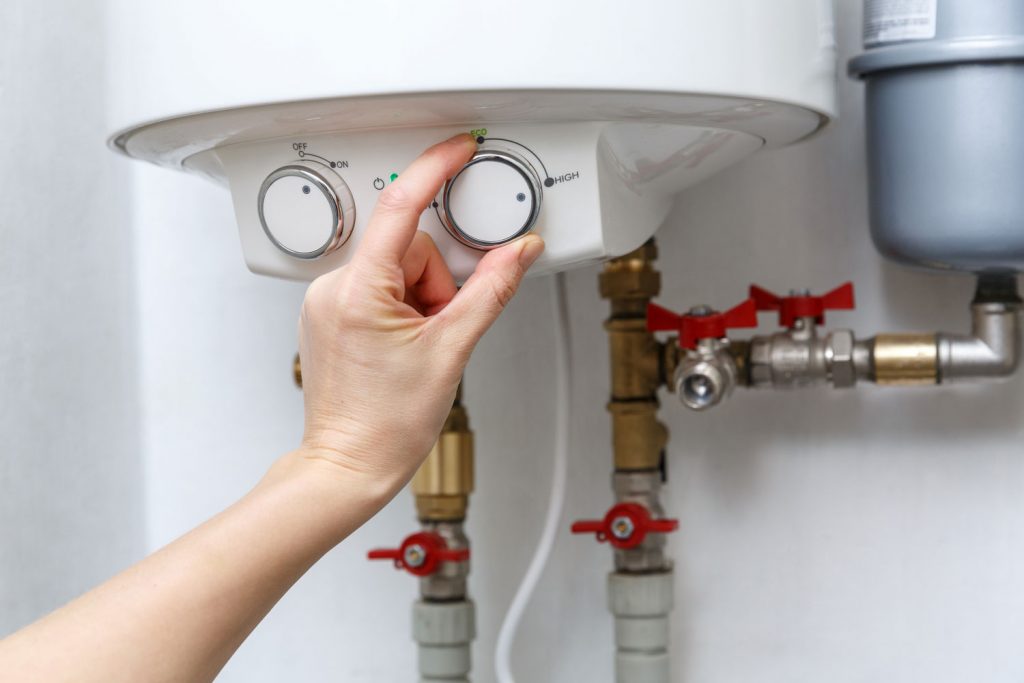Most homeowners get attached to their gas water heater as it supplies hot water for showers, cooking food, and washing dishes. But will it still be able to provide the much-needed hot water when a power outage occurs? We’ve researched and found out that it mainly depends on the gas water heater type.
A pilot-controlled gas heater relies on a pilot light to heat water, which works even without power. On the other hand, an electric-controlled gas water heater uses electricity to ignite the heating system, so it won’t work without power.
The next question you might have is, "How do I know if my gas water is pilot-controlled or electric-ignition based?" That’s what this post is going to discuss. We will also cover here the common problems with gas water heaters and how to prevent them.

What Are the Types of Gas Water Heaters?
The three types of gas water heaters include:
- Pilot-controlled gas heater
- Electric-controlled gas water heater
- Tankless water heater
Pilot-controlled gas water heater
As we've mentioned, this water heater relies on gas and pilot light to operate. Just turn on the gas, then light the pilot light with a match or any fire source available. Hot water is never a problem during a power outage with this water heater.
Electric-controlled gas water heater
Although this water heater also uses gas to warm water, it requires electricity to ignite the heat source. If the power goes out, the water may remain hot for just a few hours, and you need to wait for the electricity to get back to reheat it once it gets cold.
Tankless water heater is easier to install
Because it is tankless, it supplies hot water in an instant. The downsides are it also doesn’t work without electricity, and you won’t have a hot water reservoir.
How to Know if Your Gas Water Heater is Pilot-Controlled or Electric-Controlled?

Most gas water heaters today are electric-controlled because aside from being energy efficient, they are also easier to maintain. But here are the differences between pilot-controlled and electric-controlled.
An electric-controlled gas heater has a power cord that connects to the electrical circuit. Also, it has a blower motor and relay that require electricity.
A pilot-controlled gas heater can be characterized by a gas burner at the bottom, water supply line, and regulator on the side to monitor the temperature.
How Does a Gas Water Heater Work?
First of all, a gas water heater uses the law of physics called convection. The cold water pipe supplies water to the tank, then the gas burner at the bottom heats the water. As the water gets warmer, it rises, until it is called upon by the hot water discharge tube to supply hot water in the house.
The gas regulator located on the side of the water heater regulates the gas burner. It consists of a thermostat to keep track of the water temperature and ignites the gas burner when the temperature drops.
There’s also an exhaust pipe that runs across the middle of the water heater tank to regulate the flow of the exhaust gas from the house through the ventilation pipe. The hollow tube is installed with a spiral metal that captures and transfers it to the water, increasing the water heater efficiency.
How Can I Check if my Pilot Light is on?

You have to open two doors on the water heater. Take the first door off, then slide the second one open. You should be able to see the pilot light at the bottom of the tank. If it’s out, it might have been blown out, refer to your water heater’s manual to relight it.
In any case that the pilot light won’t come on, don’t try to light it over and over again. Doing so for a long time can cause the gas to build up and an explosion. If necessary, call for professional water heater services that assess the water heater.
Heating Up Your Gas Water Heater: How Long Does it Take?
New water in the tank may take 30-40 minutes to heat it. 60-degree water that enters the water tank takes approximately 40 minutes to reach 140-degree temperature, 70-degree water takes at least 30 minutes.
Does a Gas Water Heater Need Maintenance?

A gas water heater can last for decades, but annual maintenance can prolong its lifespan for many years. Also, maintaining it can prevent common problems such as:
No warm water
Sometimes the tank is full, but there’s no hot water coming out. For a pilot-controlled gas water heater, this could be a sign of a defective pilot light. But if the pilot light is on, it might be a problem with the burner, and often times it leads to replacement.
For an electric-controlled water heater, it could be a problem with the circuit. Open the box break to see if the electrical circuit has tripped. Just reset it and the water heater should work.
Water leakage
This is a common issue with tank-type water heaters. Over the years, the tank may corrode, leading to cracks hence water leakage. But if the water leaks come from the top, you may have a loose pipe. Double check if the cold and water flues are firmly connected.
In some instances, the leak may come from the bottom. This might be a condensation issue. Adjusting the thermostat usually solves the problem.
Unpleasant odor in hot water
An unpleasant odor in hot water is usually caused by the bacteria that build up inside the tank. Turning up the temperature to about 140 degrees to kill the bacteria solves the issue. Do not use hot water during this time to avoid burns and injuries. Then wait for about an hour before turning down the temperature.
Water takes a long time to heat
In most cases, this problem occurs because the water heater lacks the capacity to service the entire house. It drains itself and never really gets full before the water is called for. The result is lukewarm water.
At other times, it is a problem with the thermostat. If it doesn't sense temperature properly, the gas burner won’t output the right amount of heat. But it might also be a problem with your gas connection.
Low water pressure
This issue occurs in older homes with ½” plumbing standards, it limits the water pressure. But for modern homes with ¾” plumbing, it might be a problem with the sink aerator or water pressure valve.
Water is way too hot or cold
Inconsistent water temperature despite sufficient gas flow to heat the water tank is an indication of a thermostat problem. It is not conveying the correct water temperature and it might need to be cleaned or replaced.
How to Care for Your Gas Water Heater?
Periodically check the pressure valve
The pressure valve automatically opens when there's excess pressure inside the tanks to prevent an explosion.
To test if it’s properly working, discharge some water from the tank to the bucket. Lift the lever, and it should release water. If it doesn’t, it might need to be replaced.
Check out this product on Amazon.
Flush out the sediments from the water heater tank
Sediments can build up to the bottom of the tank. Not only does this reduce the lifespan of your water heater, but also its efficiency. The latter can result in high electricity bills.
What you can do to prevent this is to drain at least two to three buckets of water. Or let the water flow until you don’t see sediments anymore.
Lower the water temperature when not in use
If you’re going to leave home for a few days or a week, set the water heater temperature to its lowest setting. This can reduce energy consumption by 5%.
Insulate your water heater
This prevents up to 45% of heat loss, thus, easing the workload of your water heater. Also, it lowers the electricity bills. You can cover it with an insulating blanket then secure it with foil tape.
Conclusion

A gas water heater supplies hot water that we use to shower, cook food, and clean dishes. Depending on the type, it may or may not run without power. Pilot-controlled runs even without power, while electric-controlled doesn’t. To prolong its lifespan, annual maintenance is necessary.
If you like this post, you might also like:

